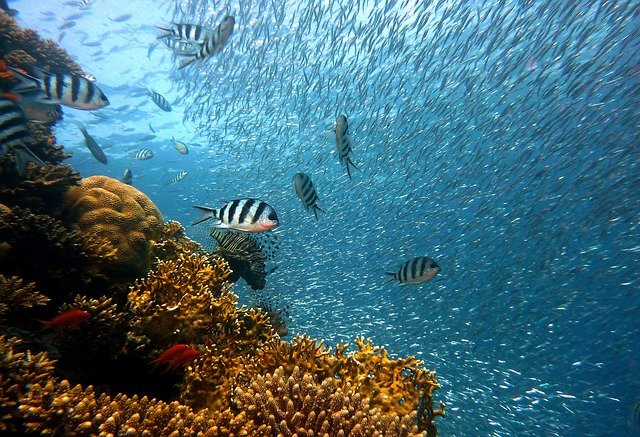
An aquatic ecosystem develops in a body of water.
An ecosystem is a set of living organisms that develop their vital processes interacting with each other and according to the physical conditions of the environment they share. The term is formed with the compositional element eco- (which refers to the ecological; that is, to that associated with ecology ) and the noun system (a group of principles and rules that are linked together in an orderly manner).
Aquatic , meanwhile, is an adjective that refers to water as a medium or that qualifies the living being that resides in water. Water, meanwhile, is called the tasteless, odorless, colorless and transparent liquid whose molecules have one oxygen atom and two hydrogen atoms.
An aquatic ecosystem , in short, is one that presents a body of water as a biotope . In other words: it is the biological network that is established in an aquatic environment.
Aquatic ecosystem concept
To understand what an aquatic ecosystem is, it is important to first focus on other notions. It must be considered, in this framework, that a biotope is a space that offers the appropriate environmental conditions for the subsistence of a community of living beings.
In the case of the aquatic ecosystem, this biotope makes the life of certain organisms possible in a body of water. A sea , a river , a lagoon , a lake or a stream , for example, can host an aquatic ecosystem.
The species that coexist in a specific biotope (in this case, aquatic) form a biocenosis . Thus, it can be stated that an ecosystem supposes the existence of a certain biocenosis in a particular biotope.

Animals, plants and other living beings can coexist in an aquatic ecosystem.
Classification according to type
Aquatic ecosystems are divided into two main types: freshwater ecosystems and marine ecosystems . Marine ones have waters with a higher saline level than fresh water.
Freshwater ecosystems can develop in rivers , ponds , lakes , lagoons , springs , wetlands or swamps . When water moves in one direction, it is a lotic ecosystem ; On the other hand, if the water remains stagnant, it is called a lentic ecosystem .
Regarding marine ecosystems, they range from mangroves and coral reefs to the high seas and the seabed . It cannot be failed to mention that more than 70% of the earth's surface is covered by salt water.
Life in aquatic ecosystems
The possibility of the development of life in an aquatic environment depends directly on the physical conditions of the water and the characteristics of the soil. When the soil is rich in minerals and soluble salts, the water acquires these values, which creates the appropriate framework for the proliferation of living beings .
In turn, constant contact with the aquatic environment leads animals , plants , fungi and other organisms to have to adapt to that environment. As water factors alter, they need to adapt to the new reality to survive. For this reason, aquatic ecosystems change according to the evolution of the water level, pollution, etc., making their protection and, eventually, their sanitation essential to conserve biodiversity.
